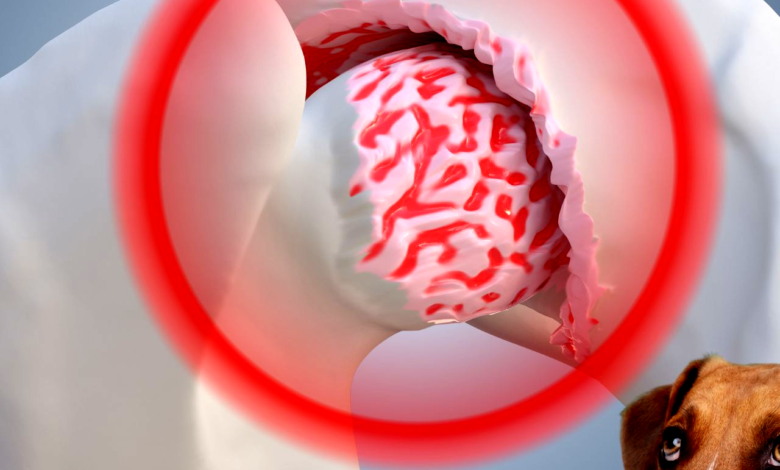
Understanding Arthritis in Pets: Signs & Care Tips
Arthritis in pets is a common yet often overlooked condition that affects the joints and overall mobility of animals, particularly as they age.
Arthritis in pets is a common yet often overlooked condition that affects the joints and overall mobility of animals, particularly as they age. Pet owners may notice subtle changes in their furry companions’ behavior, such as reluctance to move, difficulty standing, or reduced enthusiasm for walks and playtime. Understanding the signs of arthritis in pets is crucial for early detection and effective management, ensuring a better quality of life for the affected animals. Since pets cannot verbally communicate their discomfort, it is up to responsible pet parents to recognize these symptoms and take proactive measures to alleviate their pain.
Proper care for an arthritic pet involves a combination of medical treatment, lifestyle adjustments, and home remedies that can significantly enhance mobility and comfort. By learning about arthritis and the available treatment options, pet owners can make informed decisions that help manage the condition effectively. This article will explore the causes, symptoms, diagnosis, treatment options, and care strategies for pets suffering from arthritis, providing valuable insights to ensure their well-being and happiness.
Understanding Arthritis in Pets
Arthritis is a degenerative joint disease that causes inflammation, pain, and stiffness in the joints. It occurs when the cartilage that cushions the joints breaks down over time, leading to friction between bones. While arthritis is most common in older pets, it can also affect younger animals due to injuries, genetic predisposition, or underlying health conditions. Dogs and cats are the most commonly affected pets, but other animals, such as rabbits and horses, can also suffer from arthritis.
There are several types of arthritis that can affect pets, with osteoarthritis being the most prevalent. Osteoarthritis, also known as degenerative joint disease, progresses gradually, leading to chronic pain and limited mobility. Other forms of arthritis include rheumatoid arthritis, an autoimmune condition that attacks the joints, and septic arthritis, which is caused by bacterial infections. Regardless of the type, arthritis significantly impacts a pet’s ability to move comfortably and enjoy daily activities.
Causes of Arthritis in Pets
Arthritis can develop due to various reasons, including aging, joint abnormalities, and injuries. In many cases, the natural aging process leads to cartilage deterioration, making senior pets more susceptible to arthritis. However, some pets may develop arthritis at a younger age due to genetic factors, especially in breeds predisposed to hip dysplasia or elbow dysplasia. Large dog breeds, such as Labrador Retrievers, German Shepherds, and Golden Retrievers, are at a higher risk of developing arthritis due to their size and joint stress.
Previous injuries, such as fractures, ligament tears, or joint dislocations, can also contribute to arthritis. These injuries may lead to irregular joint movement, increasing wear and tear over time. Additionally, obesity is a significant factor in arthritis development, as excess weight puts extra strain on the joints, accelerating cartilage degeneration. Other causes include poor nutrition, lack of exercise, and autoimmune disorders that lead to joint inflammation and damage.
Recognizing the Signs of Arthritis in Pets
Identifying arthritis in pets can be challenging, as they often hide pain instinctively. However, subtle behavioral and physical changes can indicate joint discomfort. Common signs of arthritis include stiffness, limping, or difficulty getting up after resting. Pets may also show a reluctance to jump, climb stairs, or participate in activities they previously enjoyed.
A noticeable decrease in activity levels is another red flag, as arthritic pets tend to move less to avoid discomfort. Some animals may become irritable or display behavioral changes, such as aggression or excessive licking of the affected joints. In severe cases, muscle atrophy can occur due to decreased movement, leading to noticeable weakness in the limbs. Regularly observing your pet’s movements and consulting a veterinarian if any of these symptoms appear can help with early diagnosis and management.
Diagnosing Arthritis in Pets
A proper diagnosis is essential for effective arthritis management. Veterinarians typically conduct a thorough physical examination, assessing joint flexibility, range of motion, and signs of pain or swelling. Pet owners should provide a detailed history of their pet’s symptoms, including changes in movement, behavior, and activity levels.
Diagnostic imaging, such as X-rays, is commonly used to assess joint damage and confirm arthritis. In some cases, additional tests like MRI scans or joint fluid analysis may be necessary to determine the severity and type of arthritis. Early detection allows for timely intervention, preventing further joint deterioration and improving the pet’s overall quality of life.
Treatment Options for Arthritis in Pets
While arthritis is a progressive condition with no cure, various treatment options can help manage pain and improve mobility. Veterinarians often prescribe anti-inflammatory medications and pain relievers, such as non-steroidal anti-inflammatory drugs (NSAIDs), to reduce joint inflammation and discomfort. In some cases, corticosteroids or joint supplements like glucosamine and chondroitin sulfate may be recommended to support cartilage health.
Physical therapy and controlled exercise play a crucial role in arthritis management. Low-impact activities, such as swimming and gentle walks, help maintain joint flexibility and muscle strength without causing excessive strain. Weight management is also essential, as maintaining a healthy weight reduces pressure on the joints, alleviating pain and improving mobility.
Home Care and Lifestyle Adjustments
Creating a comfortable home environment can greatly benefit an arthritic pet. Providing soft bedding, orthopedic pet beds, and non-slip flooring helps minimize joint stress. Raised food and water bowls can prevent strain on the neck and shoulders, making mealtime more comfortable.
Regular, gentle exercise keeps the joints mobile while preventing stiffness. However, activities should be tailored to the pet’s condition, avoiding excessive strain. Warm compresses and massage therapy can also provide relief by improving blood circulation and reducing stiffness. Some pet owners explore alternative therapies such as acupuncture and hydrotherapy, which have shown promising results in pain management.
Dietary Considerations for Arthritic Pets
A balanced diet plays a significant role in arthritis management. Foods rich in omega-3 fatty acids, such as fish oil, help reduce inflammation and support joint health. Antioxidant-rich foods, including fruits and vegetables, can help combat oxidative stress that contributes to joint damage. Specialized joint-support diets formulated for arthritic pets contain essential nutrients like glucosamine, chondroitin, and green-lipped mussel extract to promote joint health.
Weight control is vital, as obesity worsens arthritis symptoms. A veterinarian can recommend portion control and specific diets tailored to an arthritic pet’s needs. Regular monitoring and dietary adjustments can ensure optimal weight and mobility.
Read More: How to Keep Your Pet Healthy & Prevent Common Illnesses
Conclusion
Arthritis in pets is a challenging condition that requires proactive management to enhance their quality of life. Recognizing early signs, seeking veterinary care, and implementing appropriate treatment strategies can significantly reduce discomfort and improve mobility. With proper medication, lifestyle modifications, and nutritional support, pets with arthritis can lead comfortable and fulfilling lives.
Pet owners play a crucial role in ensuring their furry companions receive the care and attention they need. By staying informed and making necessary adjustments, they can help their pets navigate arthritis with minimal pain and maximum comfort. Understanding the condition and taking preventive measures can make a significant difference in an arthritic pet’s well-being, allowing them to continue enjoying life to the fullest.
FAQs
1. What are the first signs of arthritis in pets?
The early signs of arthritis in pets include stiffness, limping, difficulty getting up, reluctance to climb stairs or jump, and a decrease in activity levels. Behavioral changes, such as irritability or licking affected joints, may also indicate discomfort.
2. Can arthritis in pets be cured?
Arthritis is a progressive condition with no cure, but it can be effectively managed through medication, lifestyle changes, physical therapy, and dietary adjustments to improve mobility and reduce pain.
3. How can I make my home more comfortable for an arthritic pet?
Providing soft bedding, non-slip flooring, raised food and water bowls, and easy access to favorite spots can help reduce joint stress. Warm compresses, gentle massages, and orthopedic pet beds can also provide relief.
4. Are there natural remedies for arthritis in pets?
Yes, natural remedies such as omega-3 fatty acids, turmeric, glucosamine, chondroitin, acupuncture, hydrotherapy, and weight management can help support joint health and alleviate arthritis symptoms.
5. When should I take my pet to the vet for arthritis symptoms?
If you notice signs like persistent limping, stiffness, difficulty moving, or changes in behavior, it is best to consult a veterinarian for a proper diagnosis and treatment plan. Early intervention can prevent further joint deterioration and improve your pet’s comfort.







